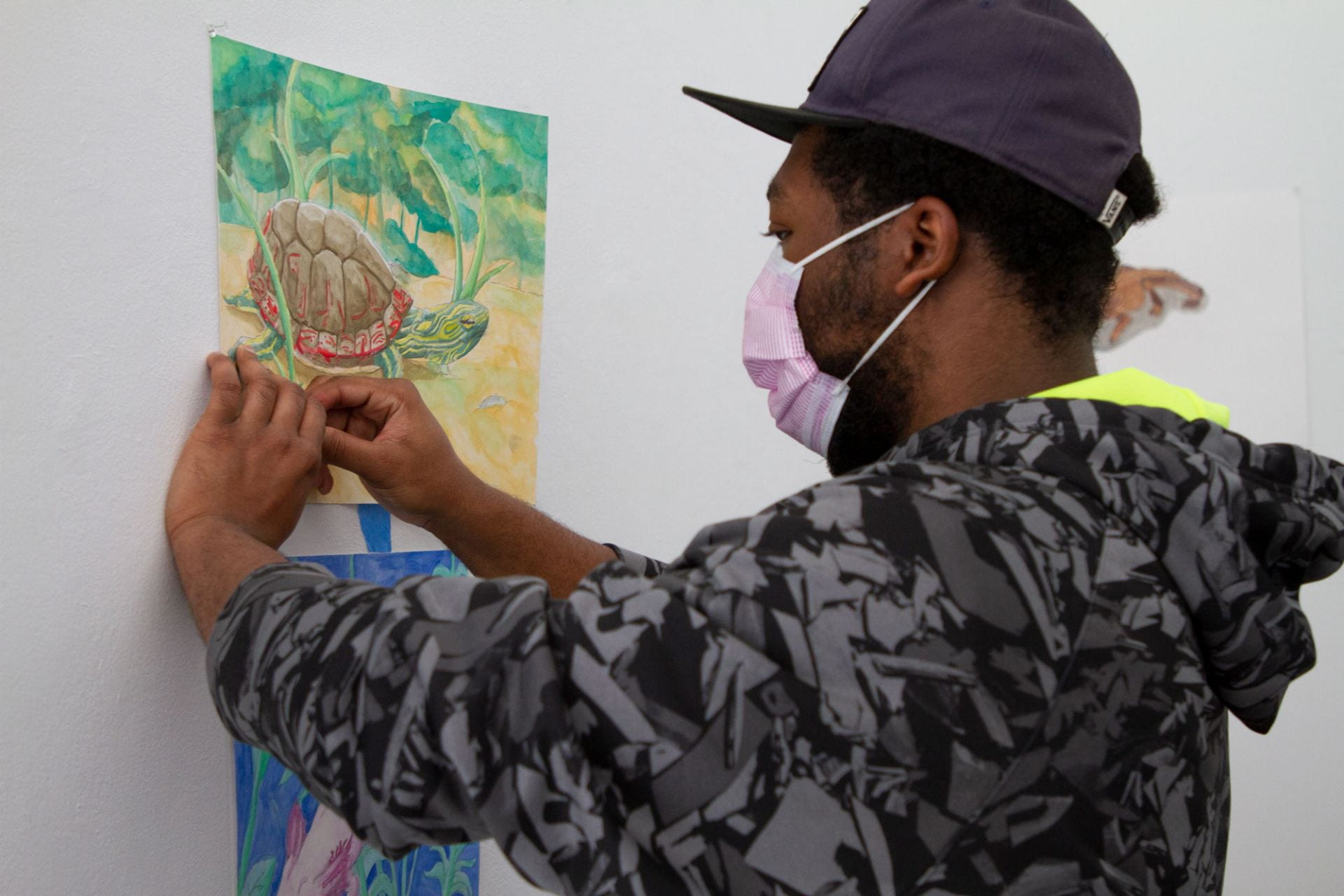A new exhibition at The University of Texas at Arlington presents a fascinating glimpse of the intersection between art and science.
UTA art students studied specimens from the UTA Amphibian and Reptile Diversity Research Center (ARDRC) and used them to create their own unique illustrations which are now being displayed at Gallery West, a part of the UTA Studio Arts Center complex in west campus.
The exhibit, “Illustrations in Nature”, opened November 1 and will run through Friday, November 5. The exhibition is open to the public from 9 a.m. to 5 p.m. and is located at the Studio Arts Center’s Gallery West, 810 S. Davis Dr. Anyone wanting to visit the exhibition is asked to contact Carlos Donjuan, UTA assistant professor of art and art history, at cdonjuan@uta.edu. Free parking is available for the general public.
The artists are students from Donjuan’s illustration class for drawing majors. Donjuan contacted Greg Pandelis, curator and collections manager of the ARDRC, about having his students come by to examine, sketch and take photos of some of the Center’s large collection of animal specimens. The students then returned to the studio to create their final works of art, using traditional and digital media.
“It was great working with Carlos and his students on this project,” Pandelis said. “It’s this great juxtaposition between art and science, and that’s something I feel we don’t get enough of. Unfortunately, science is something that has traditionally been a little inaccessible to the public, so collaborations like this really help bring out what they can mean to the public beyond just science.”
The ARDRC has the 10th largest collection of amphibian and reptile specimens in the United States and the largest in Texas. It is utilized by herpetology researchers from around the world for its wide array of specimens, including numerous holotype specimens, which are single physical examples of an organism, used when the species was formally described. The vast collection of snakes, lizards, frogs, turtles, and more presented Donjuan’s students with endless possibilities for artistic subject matter.
“I wanted my students to take advantage of some of the great resources we have here at UTA,” Donjuan said. “Part of the goal was to create a multidisciplinary collaboration between the art department and other departments here at UTA, so I hope this is the beginning of something great. This exhibit is special because the public gets to learn a little about the art department and areas of science as well, so I think it’s a win-win for everybody. I hope this exhibition serves as a possibility for more opportunities in the future, whether for UTA students or even recruitment possibilities.”
Albert “Jet” Munoz, a senior art animation major, said it was a privilege to have the chance to utilize the ARDRC’s specimens to create art.
“It was definitely a new experience. I was never able to really look at a specimen before up close,” he said. “I liked it a lot to be honest and wish we could try more of this.”
Bruce Nouanesengsy, a senior animation major, drew a salamander skeleton as one of his entries after seeing some clear and stained specimens at the ARDRC.
“We went to the center for a week and got to view the specimens and the assignment was to respond and make art based on what we saw,” he said. “I don’t know if I really have an artistic style; I just like to experiment. This work was my experimentation with watercolor.”
Donjuan said another goal of the project was to give his students real-world experience in working with clients to create illustrations by researching subject matter.
“Everyone has a little different take and different way they illustrate, so to me that just helps them build their portfolio and get their foot in the door and hopefully get more work as they get out there and graduate and become real working artists,” he said.
The exhibition also serves to raise awareness of the great science resource UTA has in the ARDRC.
“The ARDRC’s primary goal is to foster research concerning the biodiversity, biology, evolution, ecology and natural history of reptiles and amphibians,” Pandelis said. “This exhibition helps put a bit of a spotlight on the Center so it’s been mutually beneficial from both the artistic and the scientific sides.”
—
The UTA College of Science, a Texas Tier One and Carnegie R1 research institution, is preparing the next generation of leaders in science through innovative education and hands-on research and offers programs in Biology, Chemistry & Biochemistry, Data Science, Earth & Environmental Sciences, Health Professions, Mathematics, Physics and Psychology. To support educational and research efforts visit the giving page, or if you’re a prospective student interested in beginning your #MaverickScience journey visit our future students page.

